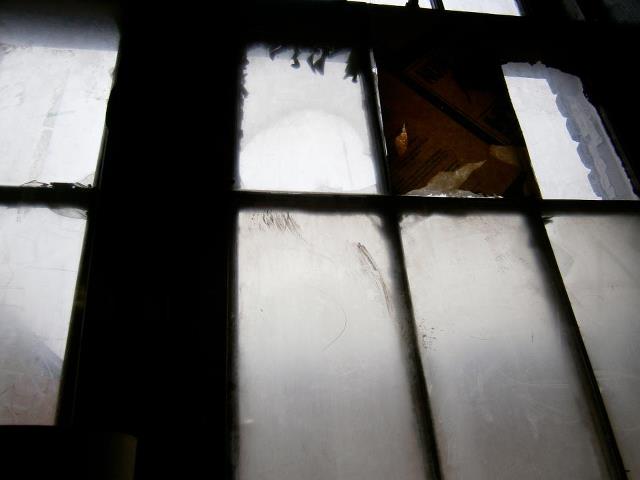
“We couldn’t get a mic, but we’re in a Methodist church,” Leavy bellows across the hall over the quieting bustle of the audience. “So we’re just going to have to use our big Methodist voices.”
It’s the second Saturday of the month, meaning that it’s time for the Chicago Educational Facilities Task Force to hold an open forum on the state of the city’s public school facilities. This month’s meeting is at the Fernwood United Methodist Church on 101st street, about 14 miles south of City Hall.
But that doesn’t stop representatives of schools from neighborhoods like Andersonville, O’Hare, Austin and Humboldt Park from coming and sharing stories of crisis. All the while Leavy, a pro-bono adviser to the task force, keeps looking for a microphone to make sure all the indignant voices are heard.
The meetings are always well-attended, but today is different. Because today is the first meeting since the city’s March 20 announcement that it would close 53 elementary schools and one high school in predominantly low-income areas.
In the three weeks since the announcement, parents and advocacy groups across the city have launched widespread protests based on the move’s potential to displace much of the city’s at-risk youth. The city, in response, has maintained that the move is a necessary measure to improve the physically-outdated, and in some cases altogether dilapidated, condition of schools.
“Consolidating schools is the best way to make sure all of our city’s students get the resources they need to succeed in the classroom,” said Mayor Rahm Emanuel in a statement following the announcement.
CPS released a supplemental capital spending plan last Saturday in an attempt to chart out the additional funding that would be allocated to the “welcoming schools,” or schools that would be receiving displaced students.
But when it comes to getting hard data over which schools are most in need of maintenance and renovation, 2013 has seen a constant struggle between the school system and observers like the CEFTF.
“They’re going to funnel facility improvements to the receiving schools to try to make a bitter pill easier to swallow, but what people don’t understand is that this is a total shot in the dark,” said Jackie Leavy, a pro-bono adviser to the CEFTF. “City-wide, they don’t have an updated set of information on facility issues, no one knows which buildings have been inspected and when, and there’s no mechanism for the schools themselves to even engage in that process.”
Commissioned in 2009 by the Illinois General Assembly, the CEFTF is a 15-member working panel made up of researchers, advocacy group representatives and state politicians of both parties charged with examining CPS policy on school maintenance and forming recommendations. What they found was a massive uncovered network of schools in severe condition.
Out of 642 total public school buildings, its March 2011 report found, 92 needed a total of $750 million, or $137 per square foot, to bring them to a state of decent repair. All other schools, it found, only need an overall average of $51 per square foot to bring them to a similar standard.
In total, the city owes its schools just over $4 billion in deferred maintenance—which accounts for essential repairs like fixing defective boilers or removing asbestos, excluding renovations or modernization measures—according to a data set released by CPS in November 2010. For Mary Filardo of the 21st Century School Fund, a research group based in Washington, D.C., the number represents an oft overlooked failure of Chicago schools.
“The challenge here is that a majority of schools in Chicago may not be in such bad condition, but it’s clearly a big percentage, and they’re in big areas,” said Filardo, who founded the 21st Century School Fund in 1994 and has been its executive director ever since. “There’s a real disconnect in the education reform agenda with an understanding of how the quality of the school building affects the quality of its education—but it’s common sense that if you go to a wealthy school district, their schools aren’t falling down around their heads, because they’re demanding good facilities.”
But included in the task force’s report was that in the midst of a severe need for maintenance, the school system still managed to spend $4.6 billion on capital improvements between 1996 and 2010, all the while closing 72 schools since 2001. What’s more, between 2006 and 2010, more than 50 percent of the $1.4 billion allocated in capital improvements went to the same 67 schools.
To other CEFTF members, like Chicago Teacher’s Union researcher Sarah Hainds, numbers like these indicate that CPS isn’t allocating its funding as effectively as it could be.
“There’s just no long-range plan, which is why so many of these schools are being neglected over time,” Hainds said. “We’re wasting capital improvement dollars because we’re not seeing any planning, and we’re seeing money invested in schools that end up being closed—the issue here is priorities, not a lack of funding.”
In its 2011 report, the task force urged CPS to adopt a 10-year long-range Facility Master Plan, developed “in collaboration with community, parents, LSCs, educators and other stakeholders” so that the school system can address the needs of every school. Chicago, they noted, is one of the only major cities in the country that still lacks such a plan.
The group got its wish in June 2011 with the passage of the School Actions Accountability and Master Planning Act, which required that the city formulate a “10-year Facility Master Plan based on broad input from educators, parents, communities and other local governments.” The original deadline for the plan’s implementation was July 2013, but in 2012 the date was delayed to Oct. 1. The plan, Leavy said, is a crucial step to making rational, data-driven decisions over school planning and improvement.
“When you’re making decisions like closing schools, you have to take time to look at trends in community development, housing, how population trends might shift, things like that,” Leavy said. “The only constant in a city is community change—demographic patterns are constantly in flux—so the schools…need to look at being smart about places taxpayers already own.”
Owing to the school system’s lack of data on school conditions and their implications is the fact that local communities receive almost no attention or funding from the federal government on the issue. Such was the takeaway of a March 12 report released by the Center for Green Schools, a research organization within the U.S. Green Building Council, which estimated that about $271 billion would be needed to restore schools across the country to “working order” so that they comply with legal safety standards.
 “We extrapolated that number based on the best data we had, and it was a pretty conservative estimate,” said Rachel Gutter, director of the Center for Green Schools. “The fact is that the federal government hasn’t produced any specific data on this in nearly 20 years, and we need current data if we want to wisely and responsibly distribute resources.”
“We extrapolated that number based on the best data we had, and it was a pretty conservative estimate,” said Rachel Gutter, director of the Center for Green Schools. “The fact is that the federal government hasn’t produced any specific data on this in nearly 20 years, and we need current data if we want to wisely and responsibly distribute resources.”
The last such study, conducted by the Government Accountability Office in 1995, “began a national conversation…on the importance of safe, healthy, energy-efficient classrooms,” according to former President Bill Clinton, who wrote an introduction to the report.
According to CEFTF, Chicago Public Schools receive less than 1 percent of their capital maintenance funding from the federal government, and only 7 percent from the state of Illinois. To Gutter, the lack of attention at the national level is further indication that school facility maintenance is one problem whose severity no one wants to admit.
“No one wants to be known for having the worst school, and no parent wants to think their kids are going to a bad school,” Gutter said. “So we create this veil of secrecy around these problems, and we’re not demanding for a solution to be found. But it’s time we did.”
After making appeals at CPS hearings and calling their aldermen, school administrators from five schools turned the last place they could Saturday: Fernwood Church, and the CEFTF. Some were from schools set to be closed, and others spoke of overcrowding and lack of resources.
Teachers from Wildwood Magnet School, currently at 175 percent capacity, talked about having to hold classes in hallways and eat lunch in the gym.
Others, from Trumbull Elementary School, said they faced closure because CPS underestimated their capacity level by 38 percent. When administrators tried to appeal the decision and point out the mistake, they were simply given forms telling them how to apply students for enrollment at other schools.
“For more information,” the form read, “please call 311.”
All photos courtesy of Through Your Lens, a site dedicated to exposing schools in physically poor condition throughout the United States

























